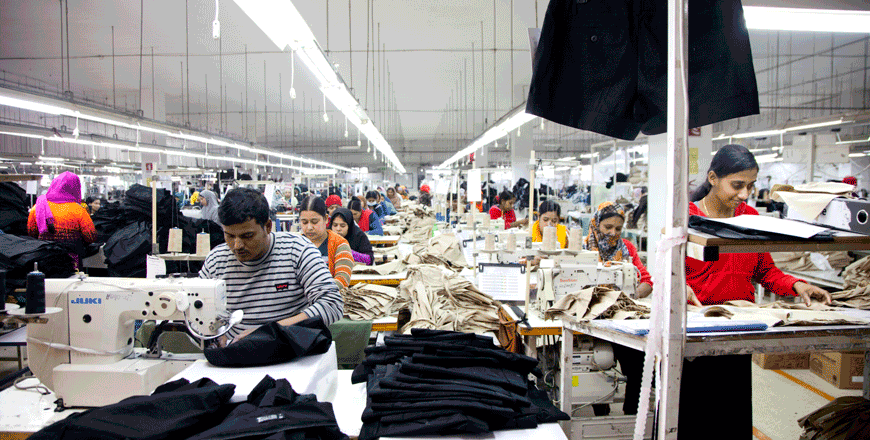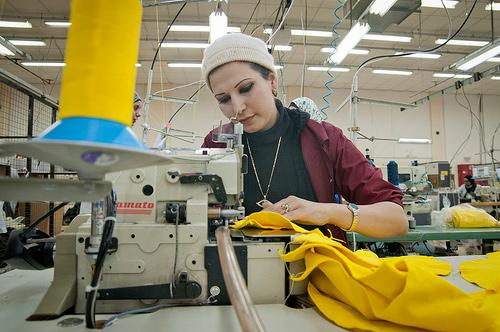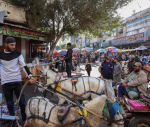You are here
Report sheds light on potential of Jordan’s garment, textile and leather industry
By Mays Ibrahim Mustafa - Aug 02,2023 - Last updated at Aug 02,2023

AMMAN — The domestic value added (DVA) of Jordan’s garment, textile and leather (GTL) industry as a share of production output is relatively high compared to most low and middle-income countries with notable export-oriented garment and textile industries, according to a recent study published by Better Work Jordan (BWJ).
“This figure is also high when benchmarked against other Jordanian manufacturing sectors,” the report added.
The DVA as a share of production output stood at 41.7 per cent in 2018, which is the most recent year for which statistics are available, the report said.
The study, published on July 31, is titled “National Economic Contribution of Jordan’s Garment, Textile and Leather Industry”. It was prepared in cooperation with the Jordan Chamber of Industry (JCI). The BWJ programme that published the report is a partnership between the International Labour Organisation (ILO) and the International Finance Corporation (IFC), which aims to promote better work conditions and boost the competitiveness of Jordan’s garment sector.
“Jordan’s GTL industry appears to have succeeded in combining a relatively high share of DVA with a high rate of export growth, suggesting that the industry has been able to make a substantial contribution to GDP while remaining globally competitive,” the report stated.
It also revealed that the sector’s returns on capital are estimated to comprise just over half of its DVA. Payments to labour income measure approximately 40 per cent, and taxes accrued to the government account for around 5 per cent of the sector’s DVA.
Roughly one-third of payments to labour are remitted by migrant workers to their home countries, the report noted.
Moreover, its key findings showed that in 2018, “Jordan’s GTL industry expended a total of $429.5 million on domestic intermediate inputs compared to $603.1 million on imported intermediate inputs”.
The industry’s most notable sources of domestic intermediate inputs include the real estate sector, the road transportation sector and the machinery, equipment and furniture manufacturing sectors, according to the report.
Employment creation
The report pointed out that the activities of Jordan’s GTL industry indirectly created around 12,400 jobs in 2018.
“Put differently, for every seven workers employed directly by the garment industry, there is approximately one additional worker employed in a job indirectly created by the sector,” the study stated, noting that roughly 50 per cent of these jobs are in administration and support services.
Anticipated growth potential
“Jordan’s GTL industry has expanded dramatically since 1996, when implementation of a series of free trade agreements between Jordan and the United States began, granting Jordan preferential access to the US market,” the report said.
The industry’s exports have increased from $1.12 billion in 2012 to over $2.26 billion in 2022. The most recent official statistics show that the GTL industry accounts for 7.7 per cent of Jordan’s manufacturing GDP and 19.8 per cent of its total goods exports, it added.
Moreover, Jordan's Economic Modernisation Vision has identified the GTL industry as a “priority”, anticipating that it has “the potential to increase its exports by three to four times over the next decade and create over 100,000 new jobs for Jordanians”, according to the report.
Related Articles
AMMAN — Despite progress in compliance and the joint efforts of the government, employers and labour unions for a collaborative garmen
AMMAN — Jordan’s garment industry has been spared the worst effects of the pandemic, proving to be “relatively” resilient in its adaptabilit
AMMAN — Poor ventilation, plumbing, sanitary services, failure to renew work permits and delayed payments are some of the violations that Ba
















